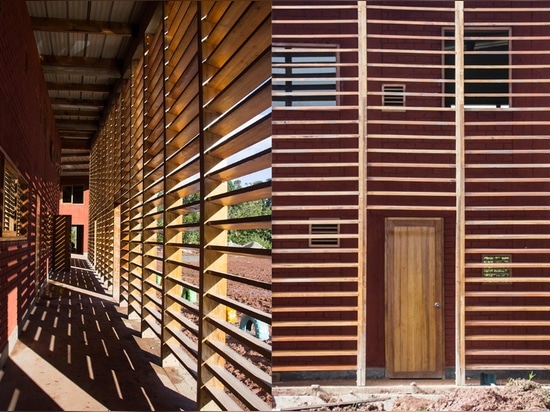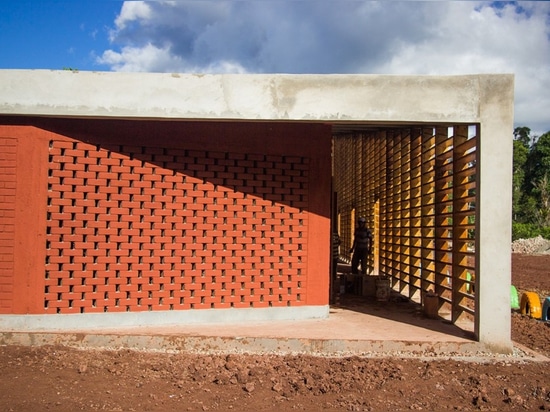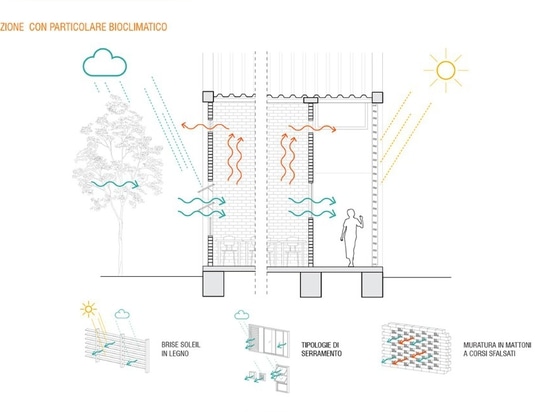
#PUBLIC ARCHITECTURE PROJECTS
School in Santa Elena
La Scuola secondaria di Santa Elena, nella foresta peruviana, disegnata da Marta Maccaglia e Paulo Afonso, è un edificio che si adatta alle condizioni geografiche, morfologiche e climatiche del luogo, ma anche alla situazione culturale e sociale delle comunità.
The project started as a result of research work and a study completed in the community of Santa Elena.
This was accomplished through reunions, interviews, and participatory workshops within the population. The data collected revealed dreams and expectations in favor of education of their children. For this reason, the community expressed the willingness to rebuild its future, overcome the past, starting from the construction of a school.
The soil survey revealed a backfill in the western part of the lot. Since the eastern part needed to have a more solid surface, it was proposed to construct a compact, longitudinal volume on the east side. The western side, the less resistant area, was intended for the schoolyard, sport’s court, and an area of greenery.
The volume is formed by two floors. In the center, a covered double height courtyard divides the school into two sections, separating functions. The northern part of the building is used for the classrooms and student restrooms. On the south side you can find the entrance hall, laboratories, library/multipurpose area, and teacher’s rooms.
Reinforced concrete was used for the main structure and handmade clay bricks for walls. The use of wood is limited to the roof structure and louvers on the east and west facades. The louver system favors indirect lighting, keeps the space ventilated, and protects the long hallways from rain. In the wallss, small louvered windows at the top of the rooms allow for hot hair escape and constant air replacement.
The hallway axis goes through the volume from north to south, allowing one to appreciate the longitudinal extension of the building. Alternation changes in the height and alternation of the lighting effects due to variation in the volumes create a visual contrasts of light and shadow.
The volume stretches upwards in the central part, generating a sharp fall towards the north and south ends. At both edges, above the restrooms, there are two tanks used to collect and store rainwater, which is used for the bathrooms and after use is purified by a trickling filter system and reused as irrigation water.
Architecture must adapt not only to geographical, morphological, and climatic conditions, but also to the cultural and social conditions of the community. The inauguration ceremony of the building is not the end, but only the beginning of a larger process of development. The school is not only a place to study, but also a meeting place and work place for the whole community.





